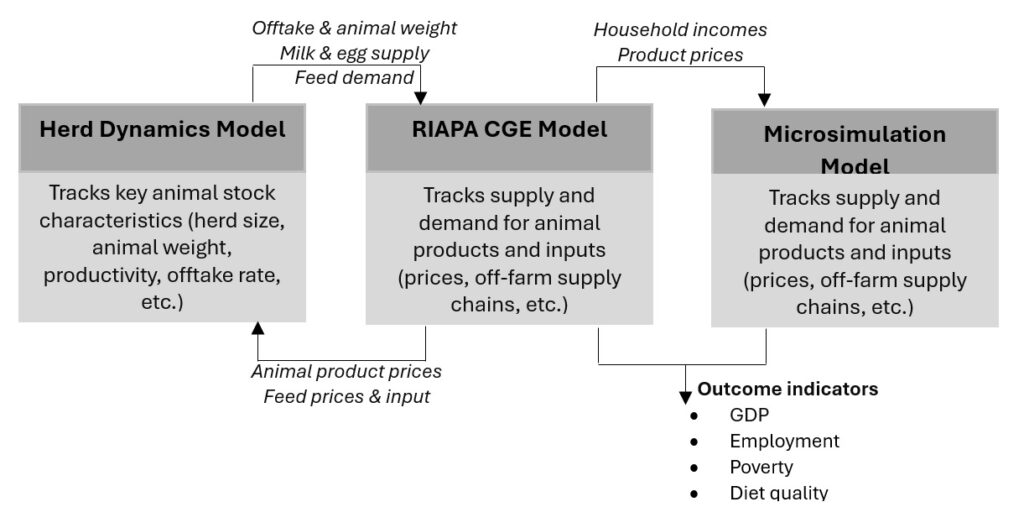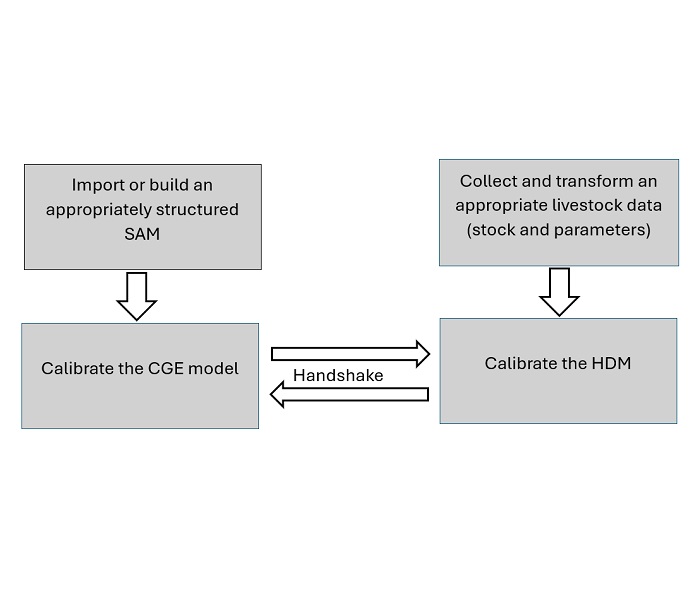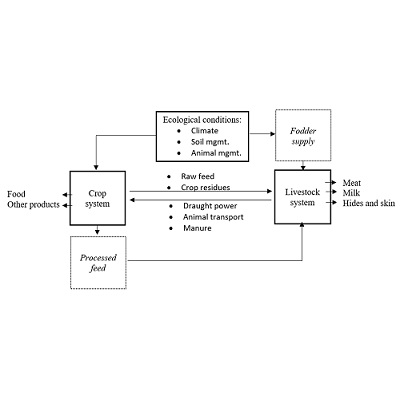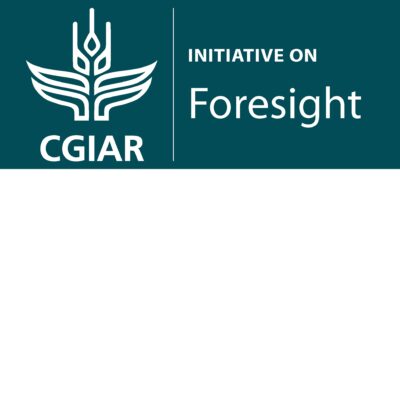Linked Economic and Animal Systems (LEAS) model
Brief model summary
The Linked Economic and Animal Systems (LEAS) model is a newly developed tool aimed at properly positioning the livestock system within the economywide modeling framework. LEAS model is a systems-based analytical approach where economic and animal system components are interconnected through several handshake variables, including prices and quantities, depicting information flows in both directions. The core economic model is IFPRI’s Rural Investment and Policy Analysis (RIAPA) computable general equilibrium (CGE) model. The animal systems model is represented by a standard herd dynamics module (HDM). LEAS model was developed in response to key insights that emerged from recent literature on livestock systems in developing countries. These insights emphasize the necessity for a livestock systems approach which accounts for the downstream linkages connecting producers and consumers, the reliance of the livestock sector development on the future trajectory of the broader economy, and the need for a holistic approach that helps prioritize livestock sector interventions in the context of the wider economy.

Fig 1. The LEAS modeling framework
Model workflow
LEAS is a data-intensive model that combines a well-structured SAM that properly depicts various sectors in the economy and animal systems data that constitutes herd/flock size disaggregated by animal type, age, sex, and breed. Whereas various initiatives such as the Nexus SAM project at IFPRI build SAMs for countries, the availability of readily useable livestock data for calibrating the HDM is scant, requiring painstaking effort to build an appropriately structured database. Model users need to estimate well-behaved life-tables of animals together with age, sex, and animal-specific demographic (e.g., death, birth, slaughter rates) and yield (milk offtake, meat offtake, milking days per year, etc.) parameters. Estimating internally consistent stock, demographic, and yield data requires considerable data gathering, compilation, and harmonization.

Workflow diagram
Workflow of the LEAS model
Linkages between models through handshakes.
Fig 2. Model workflow
Once appropriate SAM and the required livestock data is obtained, the CGE and HDM will need to be calibrated while accommodating the interdependencies between these two components of the integrated LEAS model through selected handshake variables.
Model applications
So far, the model has been used in different contexts to answer different research questions. It was used to investigate the recovery dynamics of a cattle herd when exposed to a drought shock in situations where farmers adapt alternative responses and herd management mechanisms. It was also used to provide a scenario-based analysis of alternative national development trajectories, focusing on the prospects of growth performance, urbanization, and their potential implications for the cattle system. Most recently, the study was applied to analyze crop-livestock interactions in semi-subsistence economies from which interesting insights were drawn.

Example
A framework of crop and livestock systems interactions
The model was used to implement a conceptual framework that divides the agricultural system into the crop system and the livestock system, exploring their interdependence through input and output flows within an integrated crop-livestock system operating under specific ecological conditions in tropical Africa. In this integrated system, a range of crops, including cereals, pulses, oilseeds, root crops, and perennial crops, constitute the crop farming system. The livestock system encompasses both large and small farm animals, focusing particularly on cattle. These two systems are integrated within the farming system, and their interdependence and difference in adjustment trajectory in response to weather shocks was investigated using the above framework.
Input data
At the core of LEAS is an economywide model that employs a social accounting matrix (SAM) detailing economic transactions in an economy and the country’s economic linkage with the rest of the world. The herd dynamics component of LEAS requires detailed data on herd structure and several key productivity and animal demographic parameters.
Output metrics
This model can be used to assess the impact of various policy measures and external shocks on the livestock sector and the overall economy.
Software requirements
LEAS model code is written in GAMS. The accompanying data is recorded in MS Excel.
Accessibility
User Documentation
Technical documentation of the model is available on IFPRI website . Updates to the current version of the model are discussed as new publications using the model application are out.
Model code
The model code of LEAS will be available as open-source code through Foresight GitHub repository.
(Annotated) References
General documentation
Aragie, E., Beyene, S., Legesse, E. and Thurlow, J. 2021. Linked Economic and Animal Systems (LEAS) Model: Technical Documentation. International Food Policy Research Institute. IFPRI Discussion Paper 02011.
Model applications
Aragie, A. and Thurlow, J. 2022. Modeling the recovery dynamics of Ethiopia cattle population. Journal of Arid Environments, 197. https://doi.org/10.1016/j.jaridenv.2021.104664
Aragie, A. and Thurlow, J. 2024. Analysis of alternative national development pathways for the cattle system in Ethiopia: Linked Economic and Animal Systems (LEAS) model. Animal Production Systems, accepted. https://www.publish.csiro.au/AN/justaccepted/AN23138
Aragie, A. and Thurlow, J. 2024. Modeling crop-livestock interactions in semi-subsistence economies. Foresight and Policy Modeling Unit. IFPRI Discussion Paper, https://hdl.handle.net/10568/152379
.
Acknowledgements
An earlier version of the model development benefits immensely from a previous support obtained from the Feed the Future Innovation Lab for Livestock Systems financed by the United States Agency for International Development (USAID) and managed by the University of Florida’s Institute of Food and Animal Sciences.

